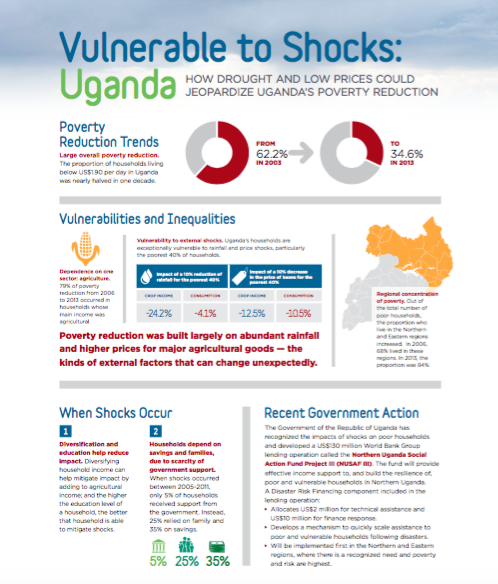This infographic examines drivers of Uganda’s poverty reduction, its vulnerabilities, and proposes recommendations for action. The content is adapted from the study “Welfare, Income Growth and Shocks in Uganda: Understanding Poverty Trends From 2005/6 to 2011/12”, by Ruth Hill, Senior Economist in the Africa Region of the Poverty Practice of the World Bank, and Carolina Mejía-Mantilla, Economist in the East Asia Pacific Region of the Poverty Practice of the World Bank.
Using nationally representative panel data for 2,356 Ugandan households visited four times between 2005-2006 and 2011-2012, the authors found that Uganda recorded impressive rates of poverty reduction, largely due to a favorable external environment. Unfortunately, reliance on an external environment makes the country’s poverty reduction vulnerable, in particular to external shocks in prices and rainfall: when prices are poor or when rainfall is scarce, crop income growth falters and consumption falls, reversing gains in poverty reduction.
To help policymakers counter these vulnerabilities, this infographic offers five policy recommendations that, if adopted, will both help households benefit from good prices and weather and at the same time increase their access to coping mechanisms that will protect them from low prices and poor weather.
The infographic and the study are produced with financial support from the European Union (EU) in the framework of the ACP-EU Africa Disaster Risk Financing Initiative, managed by the Global Facility for Disaster Reduction and Recovery (GFDRR).

